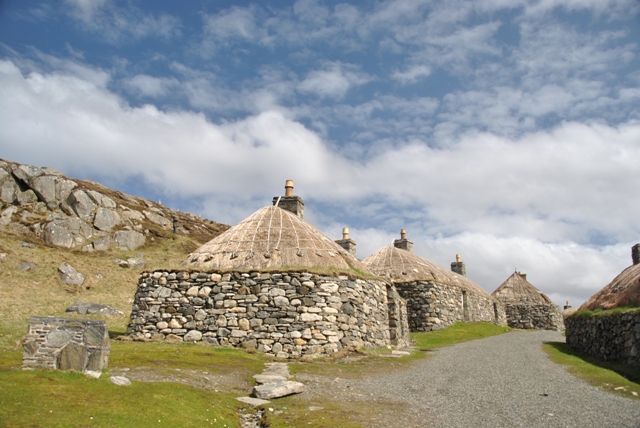Scotland Travel Blog February 2016
“10 Things to Do on Lewis & Harris”
With the popularity of the animated film “Brave” and the “Outlander” TV series, we have started to get lots of enquiries for trips to see the Calanais (Callanish) standing stones on Lewis as they are clearly the inspiration for the stone circles depicted in these productions. The standing stones at Calanais are well worth a visit, but there’s so much more to Lewis & Harris and a visit to this corner of Scotland really shouldn’t be rushed. So here’s our list of 10 things that you should consider:
Calanais – this is the main attraction and these standing stones have an aesthetic quality that gives them an edge over other famous stones circles such as the Ring of Brodgar on Orkney. For sure, the Ring of Brodgar is a much bigger stone circle, but the mysterious alignment and slender shapes of the Calanais stones make them much more photogenic. Something that might surprise you about these stones, is their proximity to some relatively modern cottages. The presence of these more recent buildings doesn’t really spoil your experience of the site, but it is a pity that the timelessness of the landscape has been disturbed.
I should mention that there isn’t just one stone circle at Calanais for, in addition to the much photographed standing stones in their cruciform layout, there are two further sites of more modest proportion.
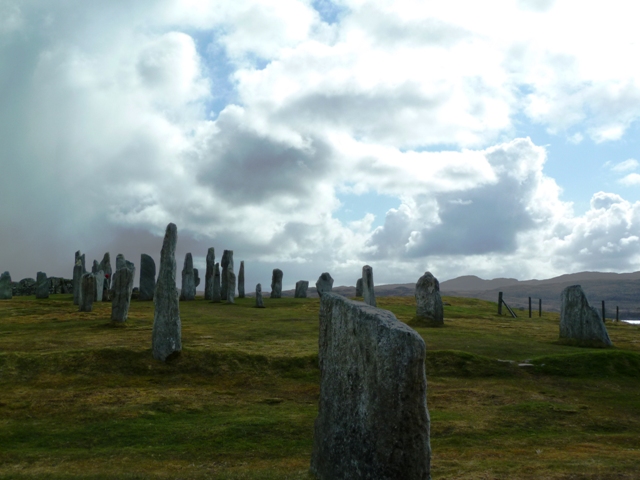
Dun Carloway – Leaping forward several centuries, although still ~2300 years old, you can go from the Neolithic period to the Iron Age by visiting Dun Carloway Broch. There are the ruins of many brochs scattered around Scotland, but Dun Carloway is one of the best preserved and only Mousa Broch in the Shetlands is much more complete. That said, more than half of the structure has crumbled away or been removed by later generations for building materials (more of that later).
There is a small, but well presented visitor centre that you can take in before walking up to the broch. The visitor centre is designed to convey some idea of how dark and claustrophobic it would have been inside a functioning broch. Dun Carloway has a commanding position on a craggy hillside that would have afforded its inhabitants some defensive advantages. It is, however, a windswept spot so make sure to have something warm to put on when you visit here.
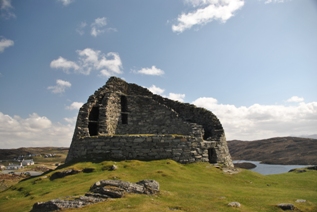
Clach an Truiseil – I mentioned earlier that some of Dun Carloway’s ruinous state might be due to locals dismantling it to build other things with its stone, well the enormous Clach an Truiseil standing stone is part of a stone circle that suffered a similar fate. This menhir stands an impressive 6 metres high and is the sole survivor of what would once have been a larger circle of many, probably smaller, stones. Most of the stones were pulled down and broken up to be used for building dykes or houses. As recently as 1914, one of the smaller standing stones was removed and used as a lintel stone in the construction of a nearby house. Pragmatism over-rules romanticism in the Western Isles.
It’s a pity that Clach an Truiseil is now a solitary figure, but its sheer size makes it a memorable place to visit and we can credit the claims that it is the largest standing stone in Scotland.
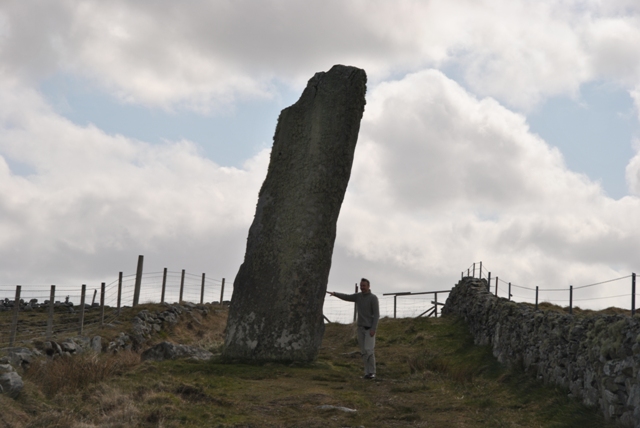
Butt of Lewis Lighthouse – Another solitary figure in a windswept landscape is the lighthouse at Butt of Lewis near Ness. In terms of scenery, this northernmost tip of Lewis is a bleak and really quite grim looking place. The grey houses of nearby Ness village have an austere look about them and the surrounding fields are devoid of trees due to the biting winds that blast in from the North Atlantic. Whilst this doesn’t make for an inviting landscape, it does create a spectacular setting for a lighthouse. The raw power of the waves pounding the cliffs at the Butt of Lewis is a strangely exhilarating and mesmerising sight to behold.
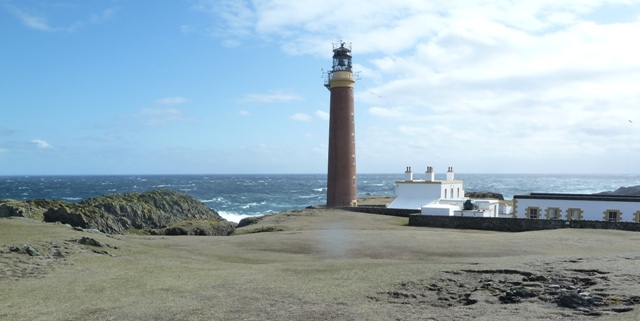
Beaches – I’m just lumping them altogether under the heading of “beaches” as Lewis and Harris have so many great beaches that I’d soon use up all the slots on my top ten things to do if I listed them individually. The west coast of Harris is just one endless delight of great beaches which look magical no matter what the weather is doing. The notable ones are Luskentyre (Losgaintir) and Scarista and we’d have to say these 2 take the top places for us. Uig Bay on Lewis is a close contender and it offers an amazing expanse of sand when the tide is out. Just a few miles north of Stornoway, you also have Traigh Mhor at Tolastadh. This beach is encircled by high cliffs that funnel the waves into dramatic breakers on the white sands. When the tide is out, you can walk around some towering sea stacks that are home to colonies of mussels, but please don’t be tempted to pick any as they’ve got a tough enough time surviving the pounding waves.

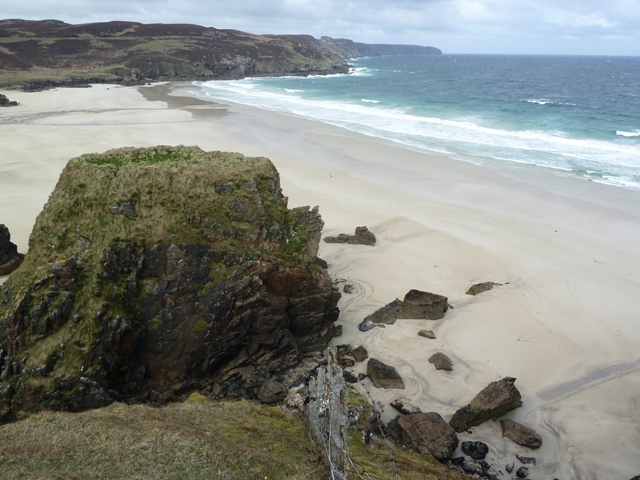
Golden Road – This is a sinewy little road that weaves its way up the east coast of Harris by dodging around lochans, marshes, rocky inlets and boulders. The road out to Huisnis on Harris is arguably twistier, but the Golden road gives you a good work out. The name is said to originate from the fact that it cost so much to build this road through such a rugged landscape, but some locals will tell you that the real reason it is “Golden” is because they had to fight so hard to get it built. Prior to the construction of the road in 1947, there was no tarmac road connecting the communities on this stretch of east coast Harris. Anything that moved here went by sea and an old friend in Harris tells stories of making covert night time visits to his girlfriend by wrapping his rowing boat oars in blankets so they didn’t make any noise in the rollocks.
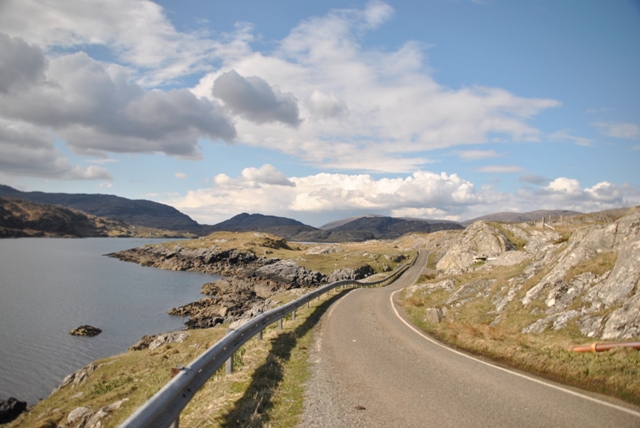
Stornoway Smokehouse – If you are arriving in Stornoway by ferry, you will pass a dark green painted building on the drive from the ferry terminal to the town centre. This is the Stornoway Smokehouse and it is worth visiting their shop as they do some of the best smoked salmon in Scotland and they smoke a lot of other things: kippers, scallops, mussels, just about anything that comes out of the sea! Lovely smoked cheese too!
Digby Chicks – Staying on the subject of food, it is a very important element of any Scottish holiday, the place you have to go to for dinner in Stornoway is Digby Chicks. The restaurant sits on Point Street, which is one of the main shopping streets in the town centre, but the entrance door is tucked around a corner on a wee side lane. So when you first find this restaurant you might be walking back and forth along Point Street wondering how to get in. It is well worth the effort to find your way in. The menu is wonderfully varied and makes great use of the local produce and wonderful seafood that is literally available on their doorstep. The name is a reference to the Smoked Herring that come from Digby in Nova Scotia.
Iolaire Monument – Maybe a strange thing to include in a list of tourist places to visit, but the history attached to this place is so moving that we consider it something that you ought to experience in order to have an understanding of the events that shaped the Isle of Lewis that you are seeing today. The Iolaire ran aground on the approach to Stornoway on New Year’s day 1919. The ship was carrying hundreds of Lewis men who were returning home from fighting in World War one. The atmosphere on board the ship must have been one of happiness and relief as they had survived the conflict and would soon be back home with their families. For some of the men it had been 4 years since they were last home. Tragically, severe storm conditions and a navigational error resulted in the ship being dashed upon rocks that lie just a few metres from an unforgiving rocky shoreline. Of the 280 men on board, only 75 survived. Forty of the survivors owed their lives to the heroic efforts of a man called John Finlay Macleod. John managed to swim ashore and drag a rope with him that then enabled others to pull themselves to safety. Some of the other survivors had to cling to the masts of the ship throughout the night whilst watching their friends, and often family, being washed away.
The tragedy has a further bitter twist as the bodies of the drowned men continued to be washed ashore for several weeks after the storm. It is easy to understand how this heart breaking event would have created a sense of despair and depression on Lewis. One consequence of this was a high level of emigration from the island in the post war period. And even to this day, the island has certain air of melancholy about it.
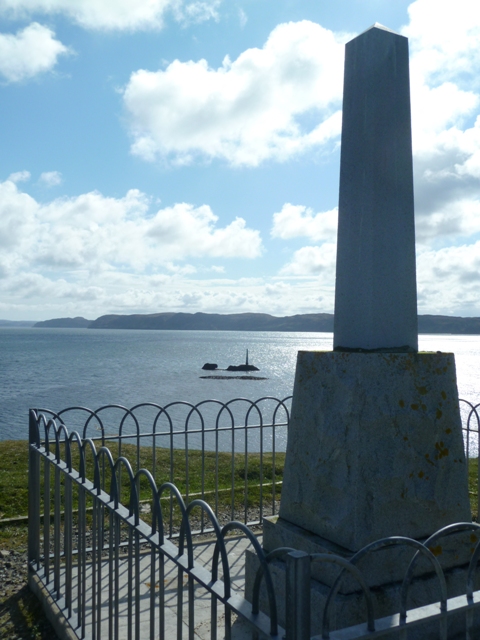
Na Gearrannan Blackhouse Village – There are two blackhouse museums on Lewis that you can visit and they are both worth doing. We mention the one at Na Gearrannan as we think its setting is a bit more appealing, and you can also immerse yourself in the experience by staying here in a self catering blackhouse cottage. The village is presented in state that it might have looked like in the 1950’s, complete with all the everyday things that the occupants would have had in those days. Indeed, it looks as if the owners have just stepped out and might be coming back any time soon. An impression that is helped by peat fires burning in the hearths.
